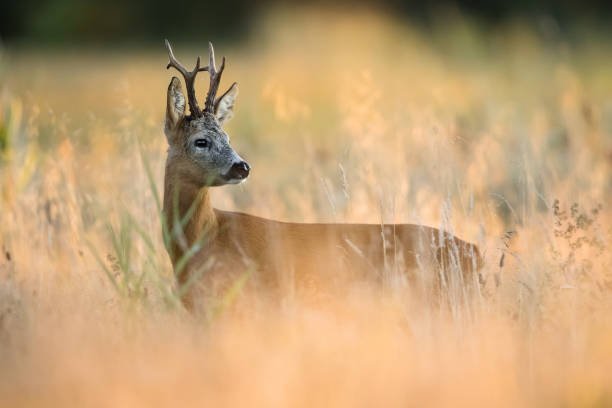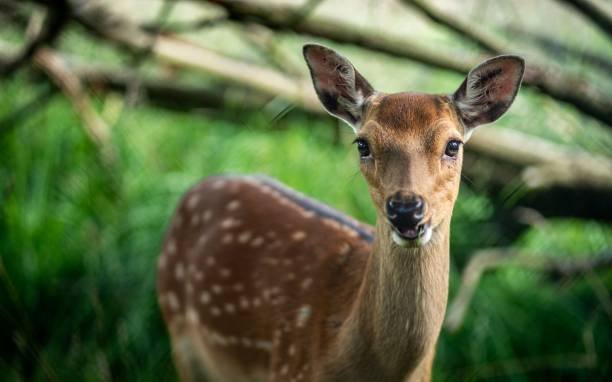Why do fawns often require special care in deer rescue efforts?

Introduction:
In this article, we will delve into the intriguing world of fawn rescue efforts and explore why these young deer often necessitate special care. Fawns, the adorable and vulnerable offspring of deer, capture the hearts of many who encounter them in the wild. However, their delicate nature and unique requirements during rescue and rehabilitation make them a distinct challenge for wildlife enthusiasts and rehabilitators alike.
Understanding the reasons behind the special care that fawns demand is crucial for anyone involved in or interested in deer rescue efforts. From their physiological and behavioral characteristics to the legal considerations surrounding their care, we will unravel the complexities that make fawn rescue a specialized and essential aspect of wildlife rehabilitation. Join us on this journey to gain insights into the world of fawn rescue and discover why these young deer tug at our heartstrings while posing unique caregiving challenges.
Fawn’s Vulnerable Physiology
Fawns, the young offspring of deer, possess a physiology that makes them particularly vulnerable in rescue efforts. Their bodies are delicate and not as resilient as adult deer. This vulnerability stems from their underdeveloped physical attributes, such as a lack of body fat and muscle mass, which affects their ability to regulate body temperature effectively.
Their immune systems are also not fully developed, leaving them susceptible to infections and diseases. Due to these physiological limitations, fawns often require specialized care to ensure they receive proper nutrition, hydration, and protection from environmental stressors during rescue and rehabilitation.
Distinctive Behavioral Needs:
Fawns have distinctive behavioral needs that set them apart from adult deer. They are heavily reliant on their mothers for survival and learn essential life skills through observation and interaction. When separated from their mothers, fawns may experience stress and anxiety, which can impact their overall health.
Additionally, fawns have specific dietary preferences and feeding behaviors that differ from adult deer. This necessitates careful attention to their dietary requirements and feeding habits during rescue efforts. Proper handling and socialization are also crucial to prevent fawns from becoming overly habituated to humans, which can hinder their chances of successful release back into the wild.
Legal Considerations in Rescue:
The rescue and care of fawns often involve legal considerations. Wildlife regulations and laws vary by location, and in many places, it is illegal for individuals to possess or care for wildlife, including fawns, without the appropriate permits and licenses. Attempting to rescue a fawn without legal authorization can lead to legal consequences and may not be in the best interest of the animal.
Therefore, it’s essential to be aware of and adhere to local and federal wildlife laws when attempting to rescue and rehabilitate fawns. Additionally, working with licensed wildlife rehabilitators or contacting local wildlife authorities is usually the recommended approach to ensure compliance with these legal requirements while providing the best care for the fawn.
Nutritional Requirements:
Fawns have distinct nutritional requirements that demand meticulous attention in rescue efforts. Initially, they rely solely on their mother’s milk, which is rich in proteins, fats, and essential antibodies. These antibodies provide vital immunity support during the early stages of life when their immune systems are still developing. Attempting to replace this natural milk with artificial formulas is a challenging task, as the formula may lack essential components found in the mother’s milk.
Specialized deer milk replacers have been developed to address this issue, but their effectiveness varies. Furthermore, fawns’ nutritional needs evolve as they age. They gradually transition to solid food, consuming leaves, grass, and other vegetation. Ensuring that rescued fawns receive an appropriate diet at each stage of development is crucial for their overall health and successful rehabilitation.
Maternal Bond and Stress:
The maternal bond between a doe (female deer) and her fawn is a critical aspect of deer rescue efforts. Deer mothers are known for their careful nurturing, and fawns depend on this care for their survival and development. When a fawn is separated from its mother due to human intervention, it can lead to severe stress for both the fawn and the mother.
Stress can have detrimental effects on a fawn’s health. It can weaken their immune system, making them more susceptible to illnesses. Additionally, stressed fawns may exhibit abnormal behaviors, such as excessive vocalization or agitation, which can further hinder their rehabilitation.
Reuniting separated fawns with their mothers is often the best course of action when possible. This requires careful coordination and monitoring to ensure the mother accepts the fawn back into her care. When reunification isn’t feasible, efforts should be made to minimize stress through proper housing, diet, and environmental enrichment.
Rehabilitation Challenges:
Rehabilitating fawns presents a unique set of challenges. Their early dependence on maternal care means that they may lack critical survival skills when removed from the wild. Learning to forage, avoid predators, and socialize with other deer are essential skills that fawns need to acquire.
The stress of being in a rescue environment, away from their natural habitat, can hinder the development of these skills. Additionally, fawns raised in captivity may become habituated to humans, making it difficult to reintroduce them into the wild successfully.
Furthermore, ensuring that fawns are released into an appropriate habitat is vital for their long-term survival. Careful consideration of release sites, predator management, and ongoing monitoring are essential components of successful fawn rehabilitation efforts.
Fawns in deer rescue efforts demand special care due to their unique nutritional requirements, the importance of the maternal bond, and the challenges associated with their rehabilitation. To effectively rescue and rehabilitate fawns, wildlife experts must carefully address these factors, striving to mimic natural conditions as closely as possible while minimizing stress and ensuring the development of essential survival skills for their eventual return to the wild.
Conclusion:
I hope this exploration of why fawns often require special care in deer rescue efforts has shed light on the intricacies of helping these vulnerable young animals. Fawns’ distinctive physiology, characterized by their fragile bodies and underdeveloped immune systems, highlights the need for specialized attention during rescue and rehabilitation. Their unique behavioral needs, rooted in their reliance on maternal care and specific dietary requirements, emphasize the importance of proper handling and socialization to ensure their successful return to the wild.
Furthermore, the legal considerations surrounding fawn rescue underscore the necessity of following wildlife regulations and obtaining the appropriate permits and licenses. Neglecting these legal aspects can have consequences both for the rescuer and the fawn.
While rescuing and caring for fawns can be a rewarding endeavor, it demands a thorough understanding of their vulnerabilities, behavioral traits, and adherence to legal guidelines. By approaching fawn rescue efforts with knowledge, compassion, and a commitment to their well-being, we can increase their chances of survival and contribute to the conservation of these remarkable creatures.










Post Comment